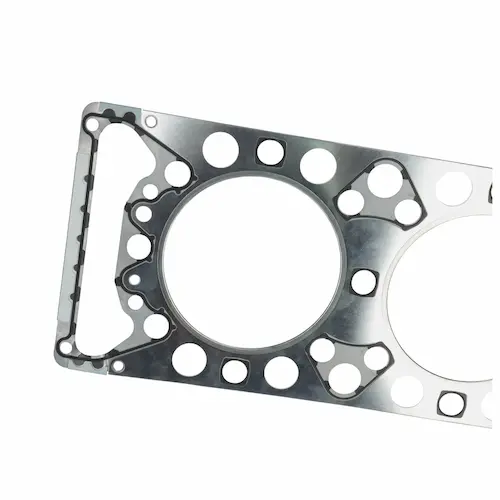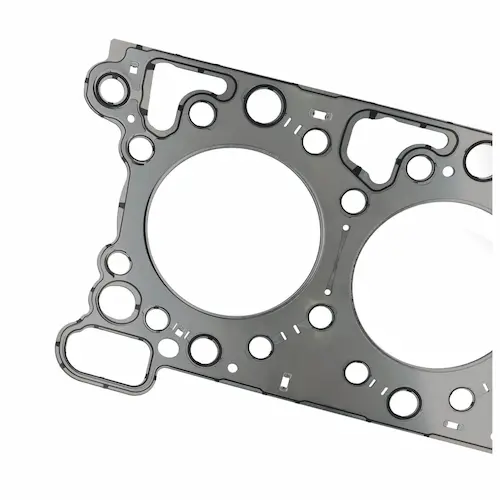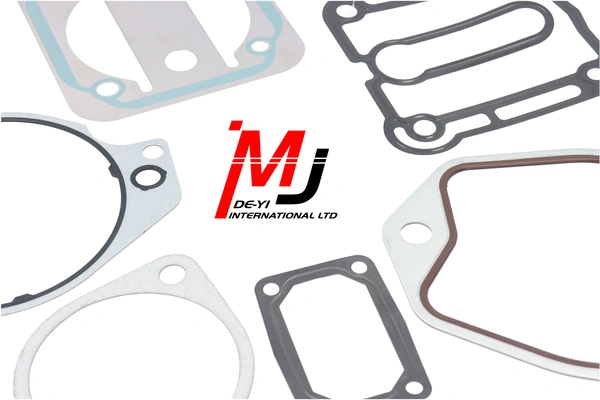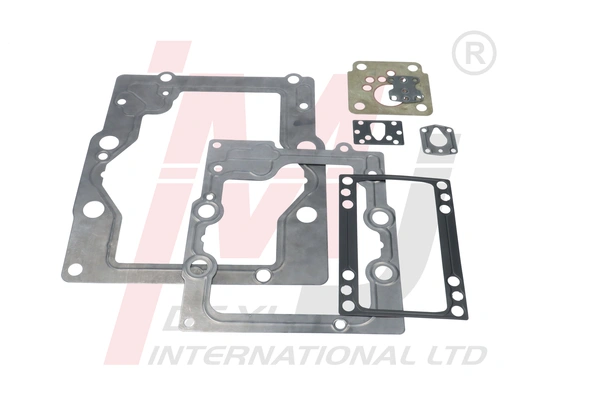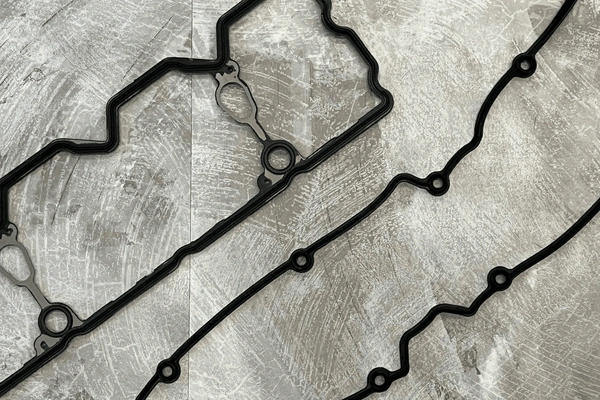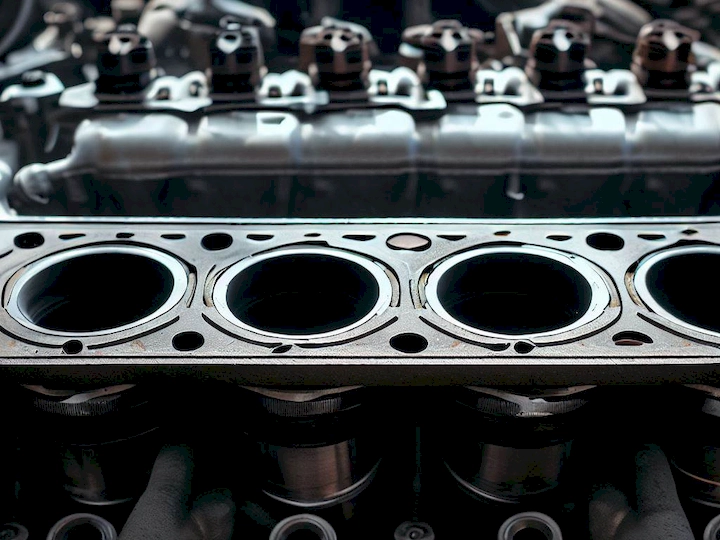
The article introduces the causes and prevention methods for blown head gasket, hoping to reduce its occurrence.The car engine is a complex machine composed of many components and systems, and one of the key components is the head gasket.
The head gasket is a thin metal or graphite piece located between the engine cylinder head and the engine block, which seals and protects the engine internals while maintaining separation of coolant, oil, and fuel. The quality of the head gasket directly affects the performance and life of the engine.
When the head gasket has a problem, it will have a negative impact on the engine performance, and may even cause damage to the engine.
Table of Contents
What is a head gasket?
The head gasket is an important component of a car engine. It is located between the cylinder head and the engine block of the car engine, used to seal the cylinder and prevent the mixing of important liquids such as coolant, oil, and fuel. If the head gasket is damaged or aged, it will cause problems such as liquid leakage and unbalanced cylinder pressure, which will seriously affect the performance and safety of the car.
Head gaskets are usually made of metal or rubber to ensure their elasticity and durability. Metal head gaskets are usually made of steel or aluminum alloy, which have high temperature resistance and compression resistance, and are suitable for high-performance engines. Rubber head gaskets are more flexible and easy to install, but not as wear-resistant and temperature-resistant as metal head gaskets.
To prevent head gasket problems, it is necessary to regularly replace the car’s coolant and oil and maintain them to ensure the cleanliness and adequacy of the liquid. In addition, do not accelerate excessively when starting a cold engine to avoid excessive expansion and contraction of the head gasket, which may cause damage. Choosing high-quality head gaskets is also the key to preventing problems, and can avoid many troubles during the service life of the car.
During the repair process, if a problem is found with the head gasket, it is recommended to replace or repair it in a timely manner to ensure the safety and performance of the car.
Blown head gasket. Coolant color has become milky.
Milky coolant is a sign of a potential problem with the engine, such as a blown head gasket or a cracked engine block. It indicates that coolant and oil are mixing together, which can cause damage to the engine if not addressed promptly.
Common symptoms of a blown head gasket
If you’re wondering how you can tell if your car has a blown head gasket, there are a few things to look out for.
Oil leakage caused by a blown head gasket
If the oil in the water tank is too thick or there is even a greasy substance, it is clearly abnormal. Mixing oil and water will produce a milky color mixture after being stirred by the pressure of the engine. This mixture has no lubricating effect, so engine components will generate high heat due to friction, and the lack of lubrication will cause the components to wear.
At the same time, the piston will expand due to high heat, causing it to get stuck in the cylinder, resulting in engine cylinder compression.
Air leakage caused by a blown head gasket
If the gasket between two or more cylinders fails, the pressure of the combustion explosion leaks from one cylinder to another. However, adjacent cylinders are usually relatively opposite. If the pressure leaks, it will cause the cylinder pressure to be unbalanced and the engine power to weaken.
In this case, you will feel engine shaking or weakness during driving, and there will be a noticeable delay when accelerating or starting. You will often need to press the accelerator pedal repeatedly to achieve better performance.
Water leakage caused by a blown head gasket
If the head gasket is damaged due to aging or the cooling system is leaking, it will cause coolant to enter the cylinder, affecting combustion efficiency and engine temperature. In this case, white water vapor will appear from the exhaust pipe, there will be a large number of bubbles in the coolant tank, and the water level will decrease for no apparent reason.
When you open the oil cap, you may also see a milky liquid mixture of oil and water.
White Exhaust Smoke
White smoke billowing out of your exhaust means that coolant is likely leaking into the cylinders. This usually happens when there has been a breach in the head gasket, which makes the coolant create this white steam. Have it taken care of before the breach gets bigger and bigger.
The most serious fault is usually due to engine overheating or detonation, which causes the entire head gasket to burn out or fracture. In this case, the pressure, coolant, and oil in the cylinder will mix together, producing a high-temperature and high-pressure coffee-with-milk-colored liquid inside the engine. This liquid cannot cool or lubricate, and will cause engine components to wear or fracture, or even cause the piston to get stuck or the engine to shrink. This situation usually requires a major engine overhaul or engine replacement to resolve.
Reference video:
To prevent blown head gaskets, we can take the following maintenance measures:
Regularly replace the coolant, choose the correct coolant concentration, and avoid rust or blockage of the water pipe
Regularly replacing the coolant is very important to maintain the normal operation of the car engine. However, simply replacing the water is not enough, and it is also necessary to choose the appropriate concentration of coolant. If an improper coolant is used, it will not only fail to protect the engine, but also cause problems such as rust or blockage of the water pipe.
Therefore, choosing the correct coolant is a very critical step, which can effectively prolong the life of the engine and improve the performance of the car. When choosing a coolant, you should follow the recommendations of the car manufacturer and pay attention to adjusting the concentration. Regularly replacing the coolant and choosing the correct coolant can keep your car engine in good condition and reduce the cost of maintenance and repair.
Do not accelerate excessively when starting a cold engine, allow the engine to gradually warm up, and avoid deformation caused by excessive temperature difference
When the engine is in a cooling state, do not accelerate excessively, but gradually warm up. This is one of the most important maintenance methods. Because when the engine is cold started, the viscosity of the lubricating oil is higher, and the fluidity is poor. If you accelerate excessively, it will increase the load of the engine, causing insufficient lubrication, accelerating engine wear, and even damaging the head gasket.
In addition, the temperature difference between the head gasket and the engine block is large when the engine is in a cooling state. If you accelerate excessively, it will accelerate the expansion and contraction speed of the head gasket and the engine block, increasing the risk of head gasket deformation and fracture. Therefore, when the engine is in a cooling state, do not accelerate excessively, but gradually warm up. This is a very important car maintenance method, which can effectively prolong the life of the engine and improve the performance of the car.
Always check the water level of the auxiliary water tank. If the water level continues to decrease, thoroughly check for water or oil leakage
Regularly checking the water level of the auxiliary water tank is very important. If you find that the water level is continuously decreasing, you need to conduct a thorough inspection to determine whether there is water or oil leakage. This may be caused by many factors, such as a damaged water tank, a damaged head gasket, a loose hose connection, or even a malfunctioning valve, etc.
In addition, regularly maintaining the water tank and its components (such as cleaning and replacing worn parts) can help prevent leakage and ensure the normal operation of the water tank. If you have any questions or problems with the maintenance of the auxiliary water tank, it is recommended to consult a professional.
Always pay attention to the water temperature and oil temperature gauges. If you find that the temperature is too high, you should immediately stop and check to avoid engine overheating
When driving, there are important things that need to be constantly monitored. One of them is the vehicle’s water and oil temperature. These temperatures should usually remain stable, but if you find that these values are abnormally high, you need to take corresponding measures, such as stopping and checking in time to avoid engine overheating. In addition, you can also regularly maintain your vehicle, such as changing the oil and checking the radiator cooling system, to ensure that your vehicle is always in the best condition.
Check the oil cap and radiator cap. If you find any liquid mixture of oil and water, thoroughly check the condition of the cylinder head gasket
Regular maintenance inspections are essential to ensure proper operation of the car. One of the checks is to check whether the oil cap and radiator cap show any signs of pollution. If you notice oil and water mixed together, you must thoroughly check the condition of the cylinder head gasket. This component plays a crucial role in ensuring smooth engine operation, so any damage or wear may cause serious problems.
In addition to checking the oil and cooling systems, it is also important to check the condition of the air filter, spark plugs, and other important components. Regular maintenance can prolong the life of your car, reduce the risk of failures, and ensure safe driving on the road.
Using high-quality engine gaskets to avoid engine failures caused by gasket damage is also one of the important keys
The cylinder head gasket is very important for protecting the engine. If any abnormal signs are found, they should be dealt with in a timely manner to avoid greater losses. I hope this article can give you a deeper understanding of the cylinder head gasket, and you are welcome to leave a comment to share your thoughts and experiences.
MJ Gasket is an engine gasket manufacturer that specializes in producing high-quality engine gaskets.We has always been committed to development and exploration, as reflected in our tagline. Since our inception in the early 1980s, we initially focused on supplying heavy-duty engine gaskets and diversified our product range significantly. Today, we offer gaskets for various industries and devices, and our list of offerings continues to expand.
We remain open-minded and adaptable, constantly embracing change in the pursuit of making your gasket needs a reality. Our unwavering dedication to innovation allows us to meet the ever-changing demands of our customers. As we move forward, we eagerly anticipate further advancements, envisioning a future where our gaskets come to life in even more remarkable ways.
We can produce head gaskets for various brands. You can refer to our website catalog:
Cylinder Head Gasket – Aftermarket Engine Parts – MJ GASKET
When choosing our truck and heavy-duty engine gaskets, you will also receive support and service from our professional team. We will provide on-time delivery and stable supply to ensure that your needs are met. Whether you are a truck engine repair shop or an individual in need of engine rebuilding, we are committed to providing you with excellent products and customer experience.
